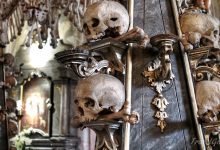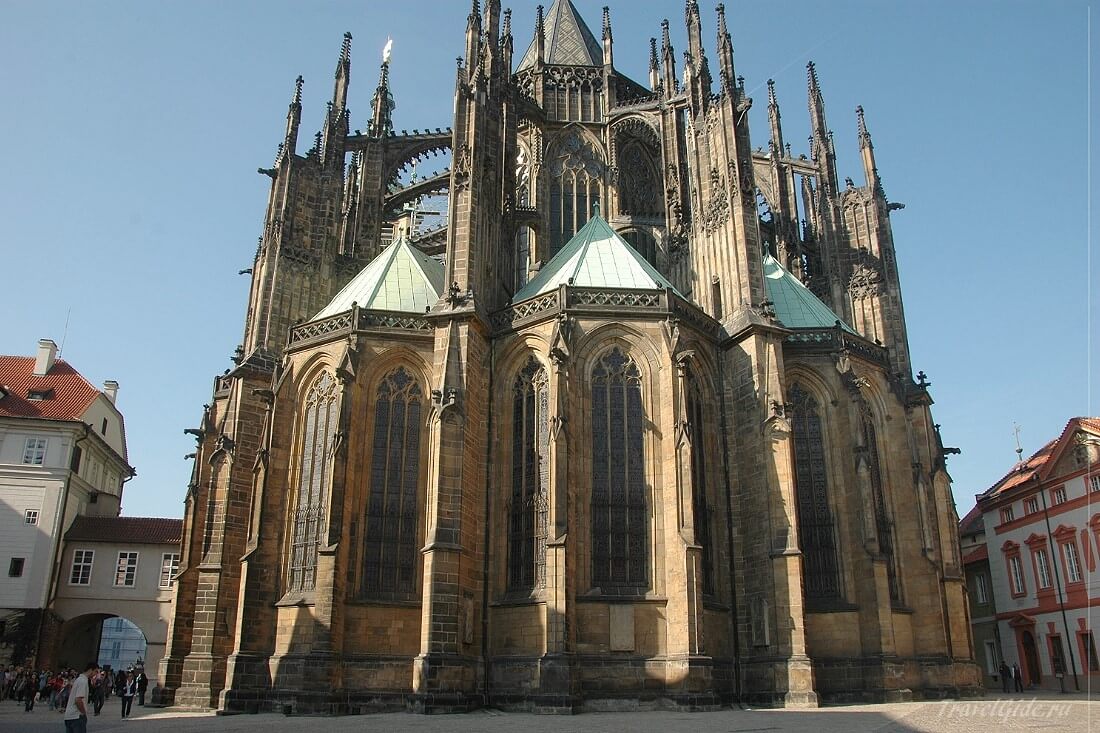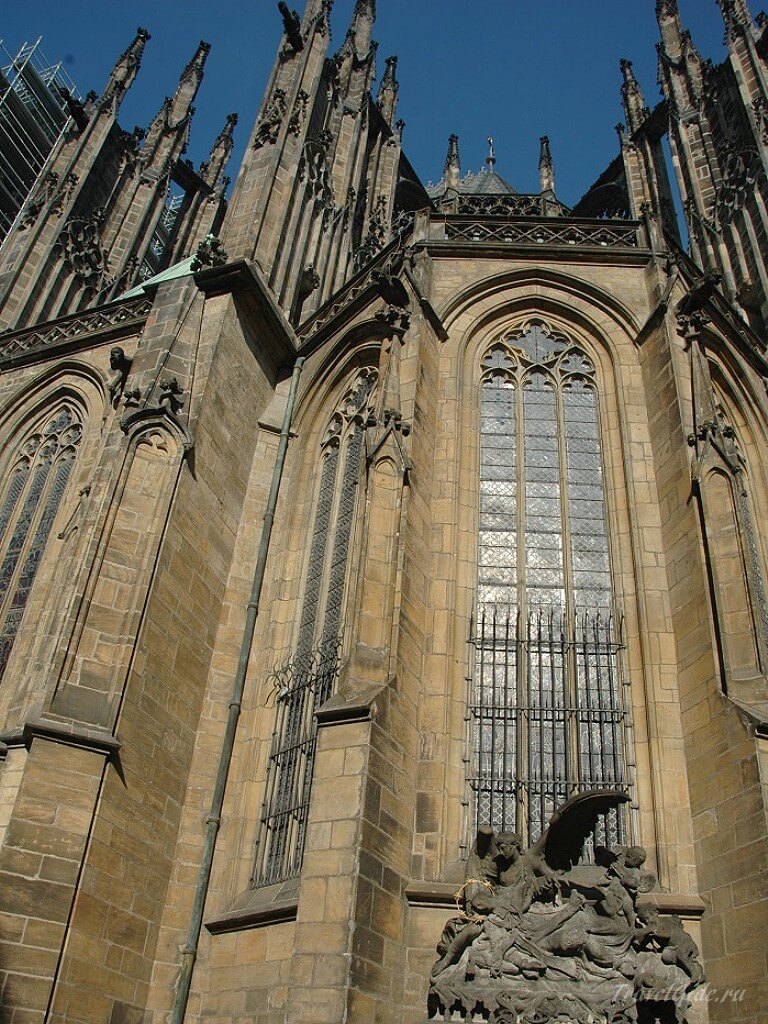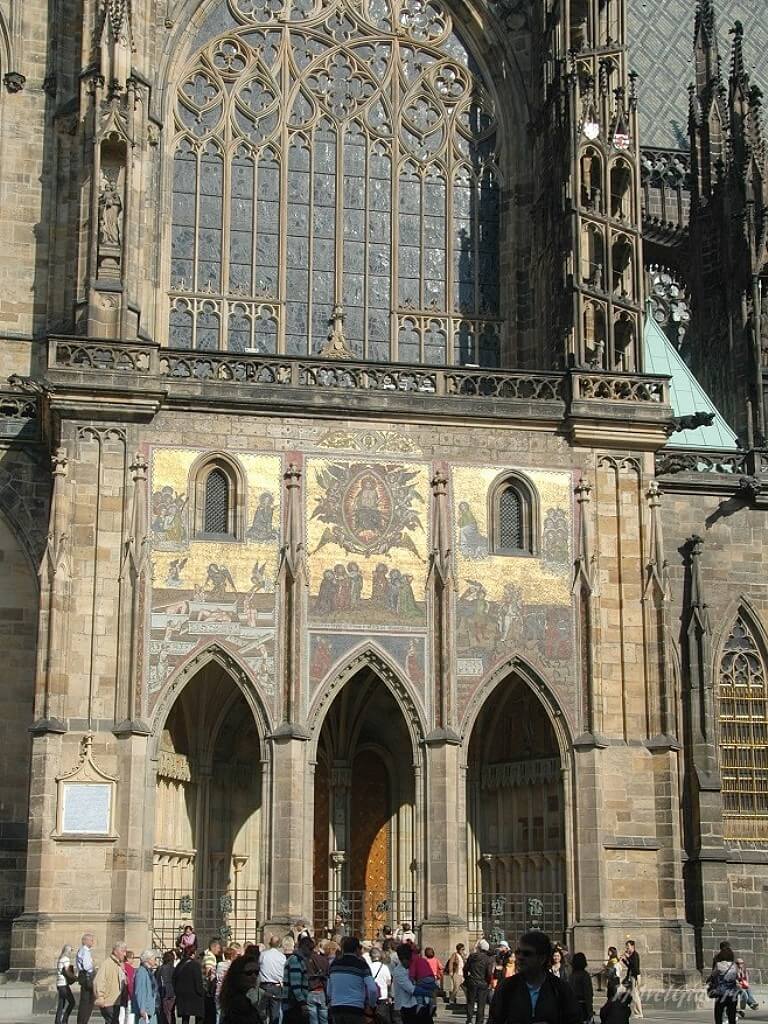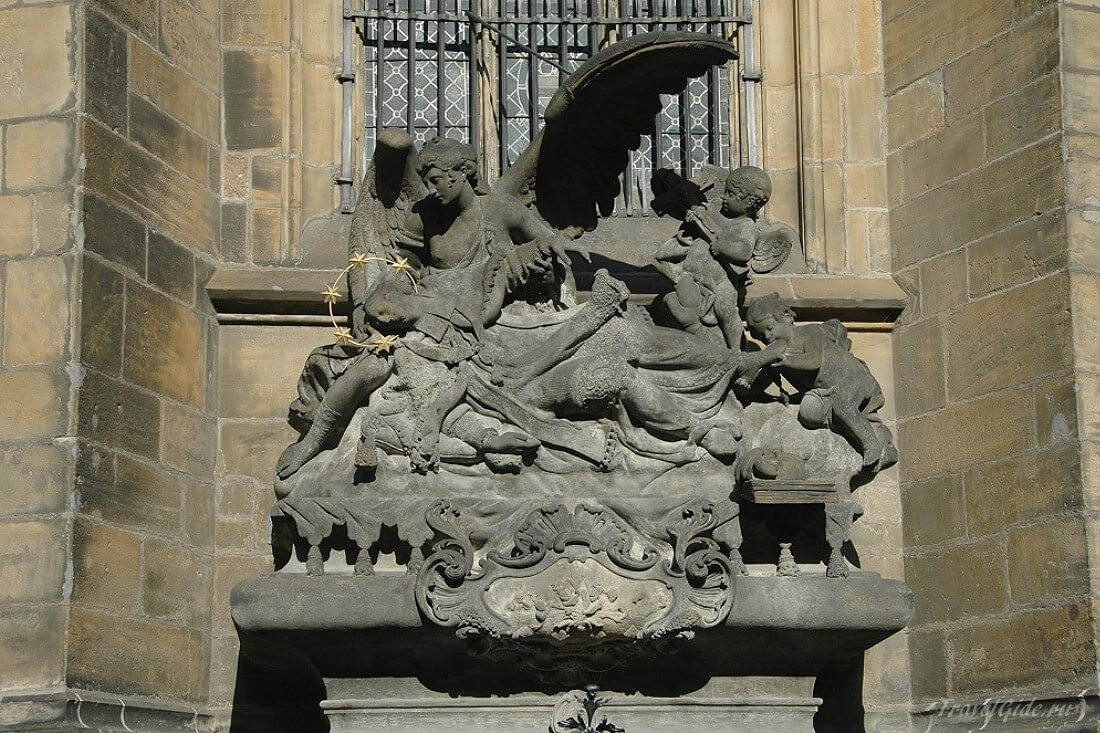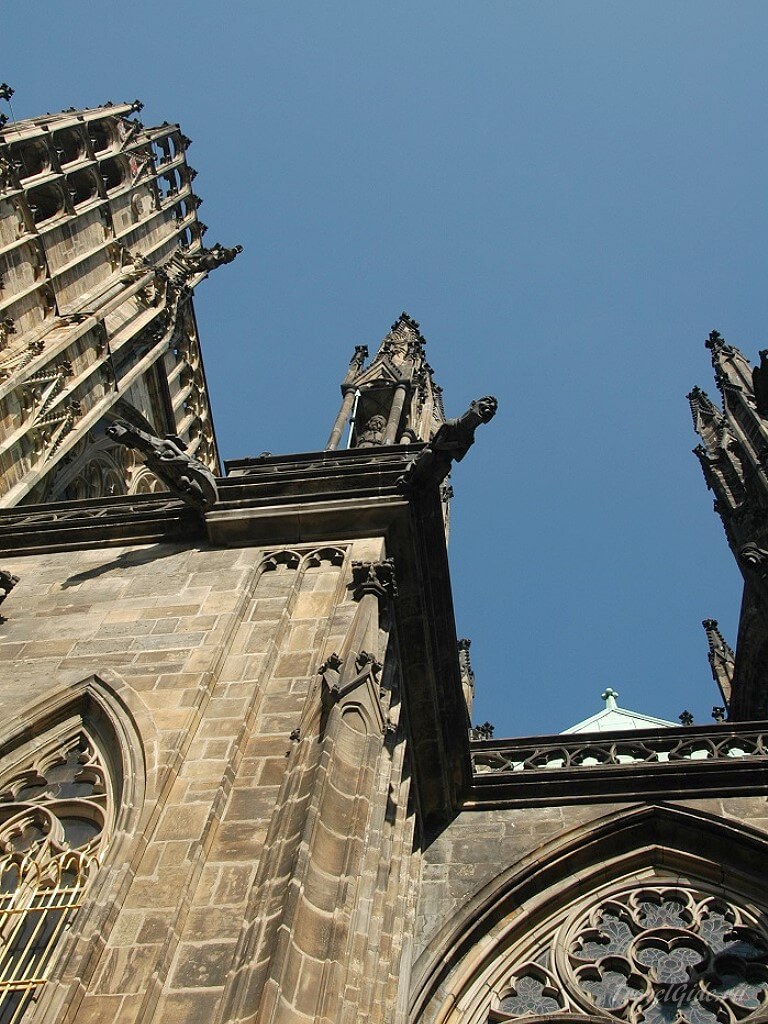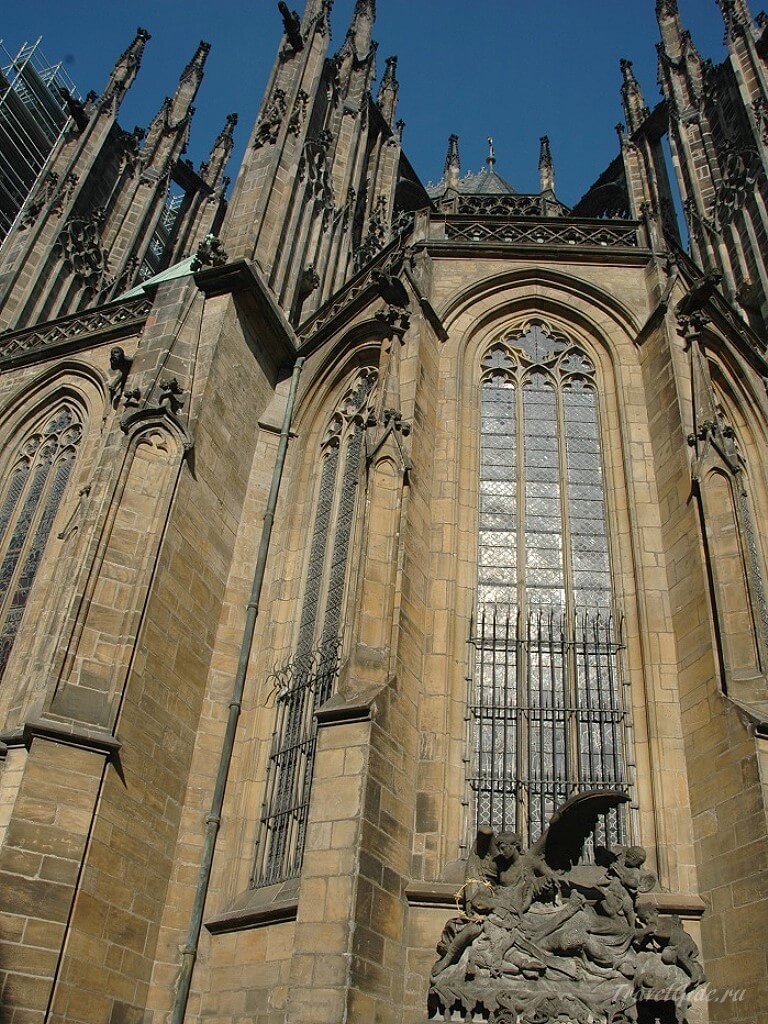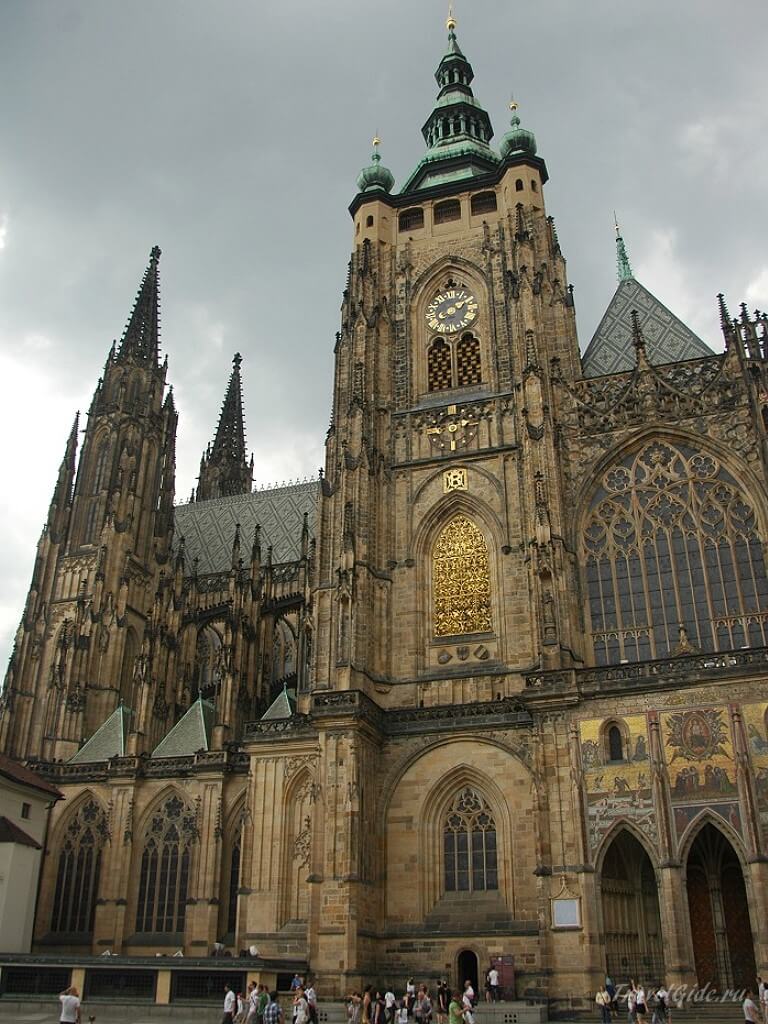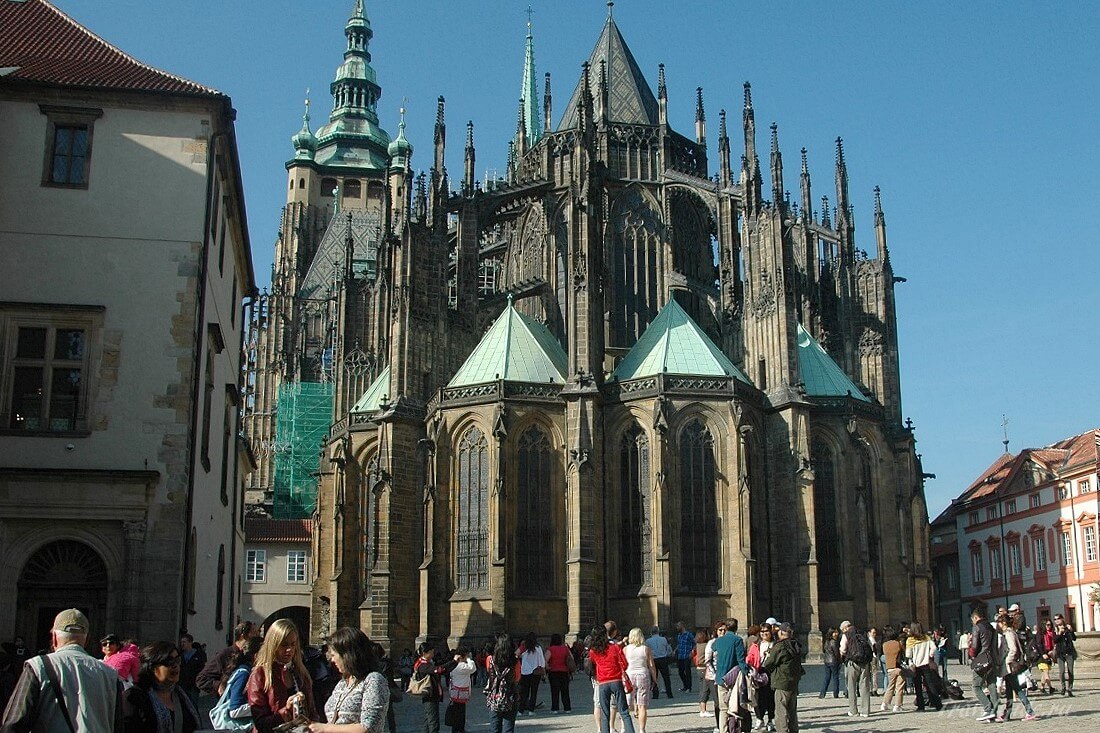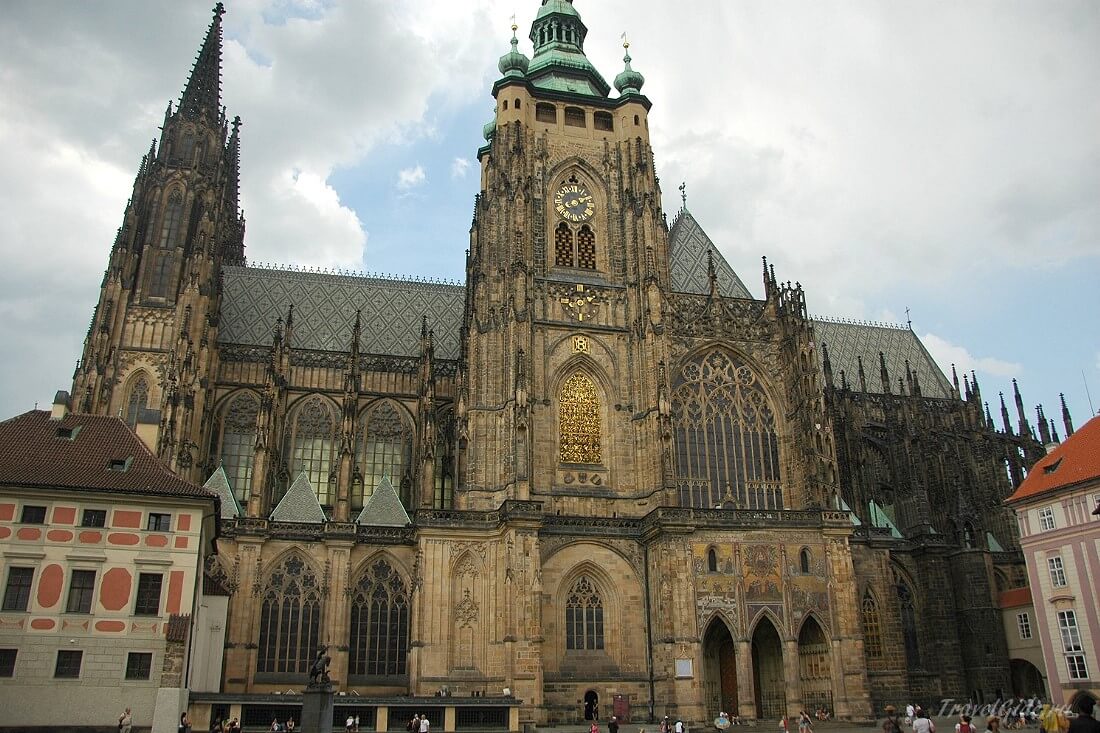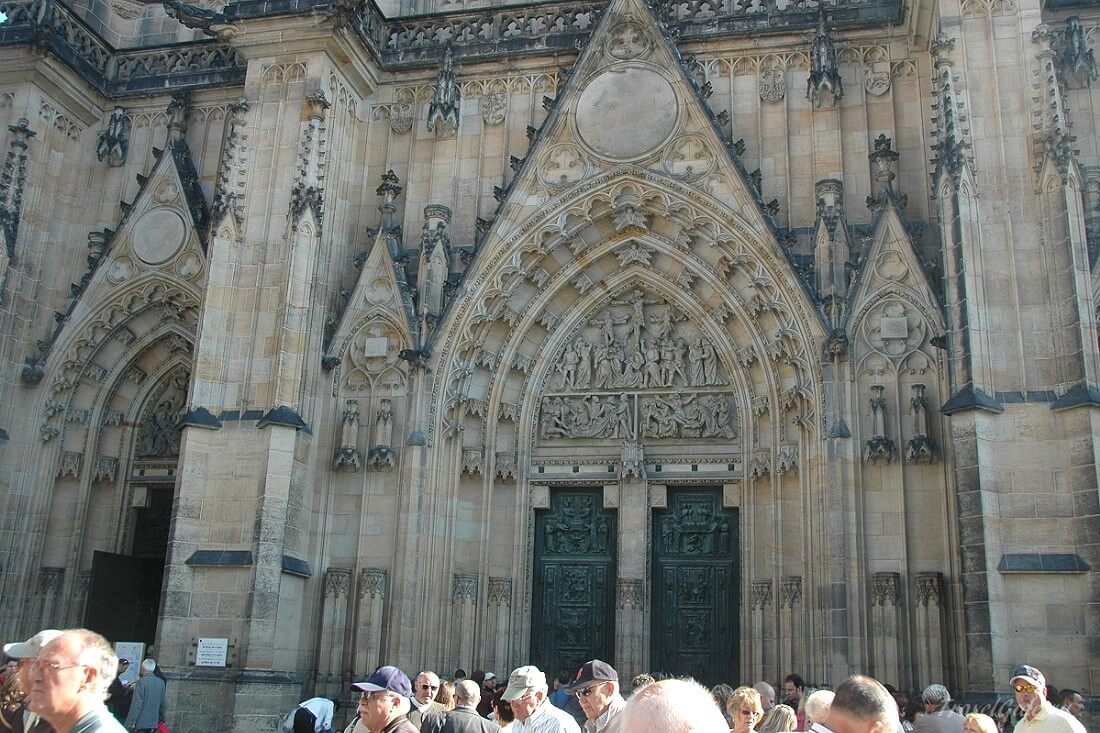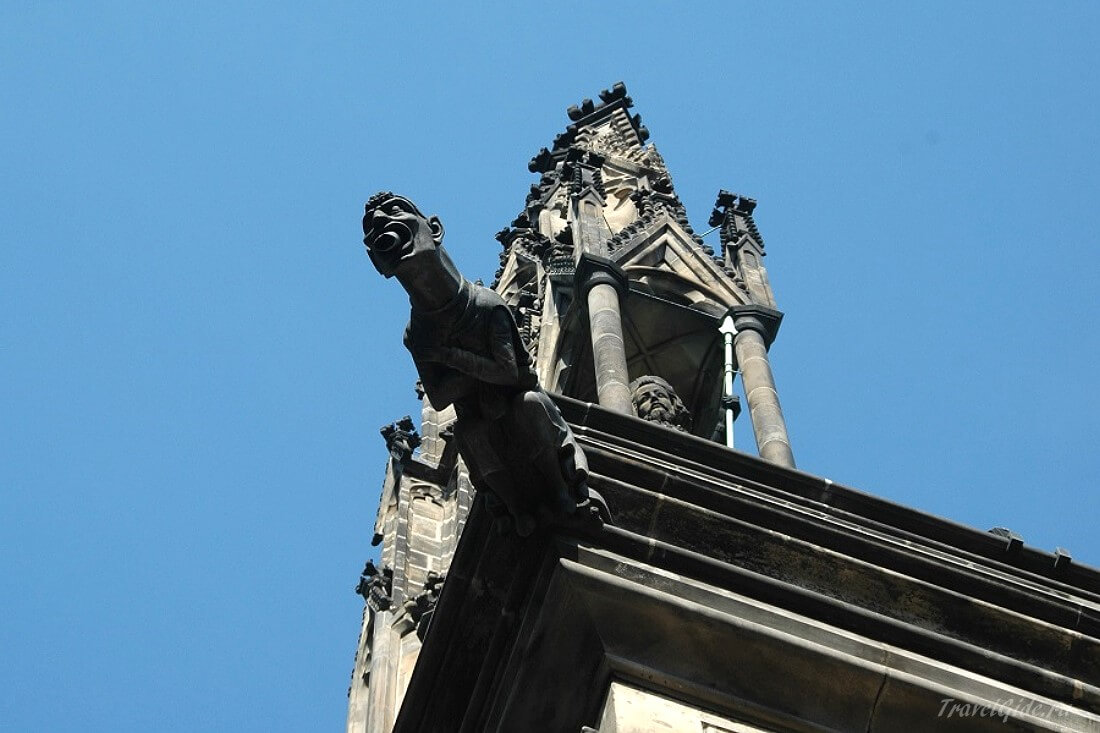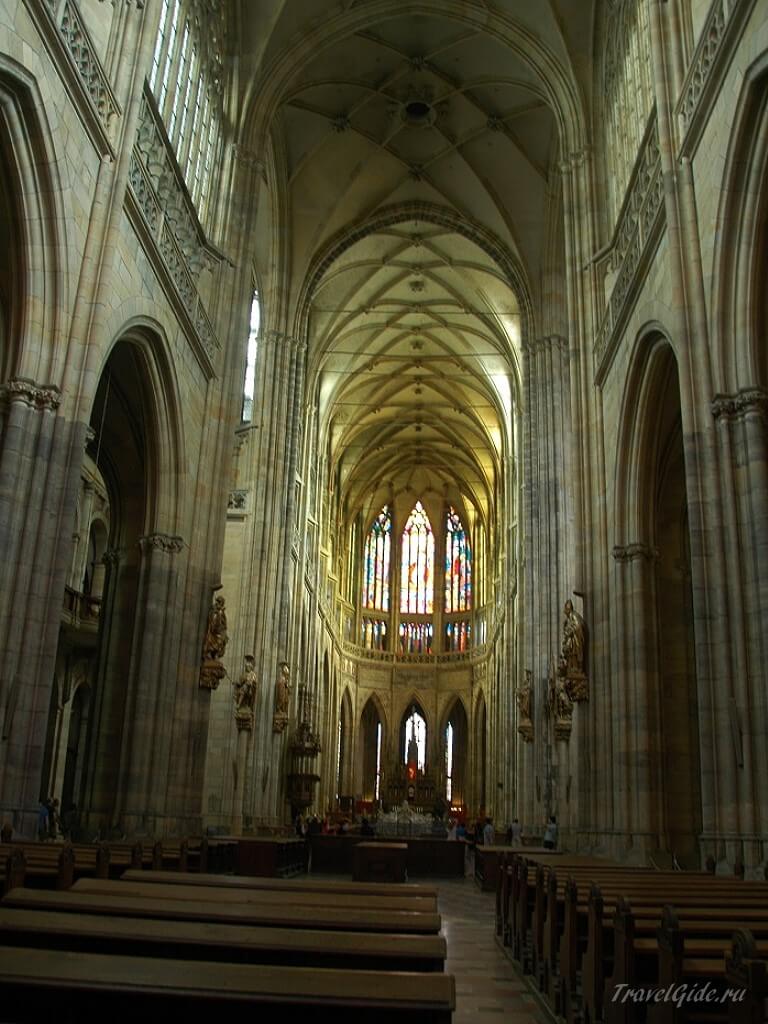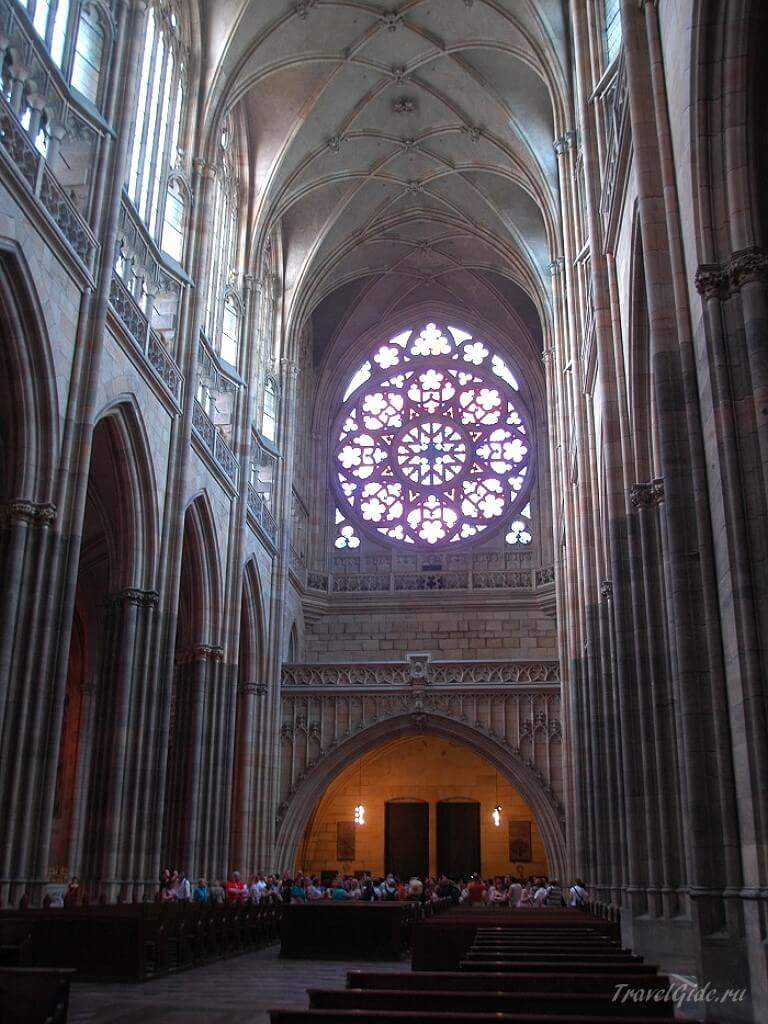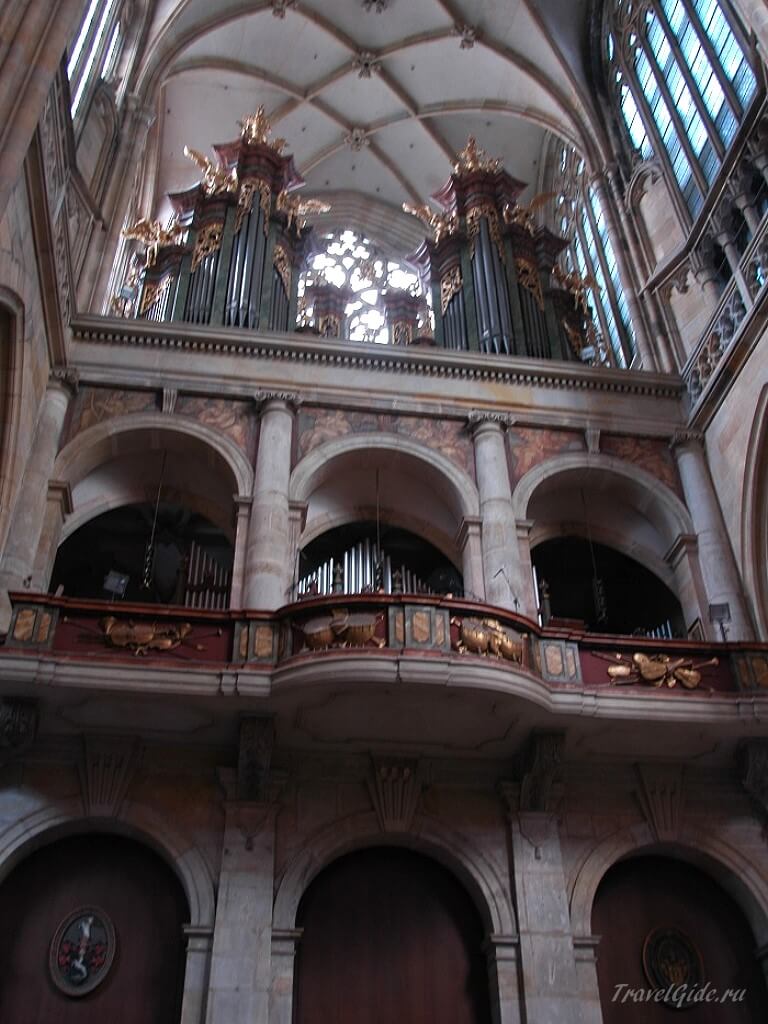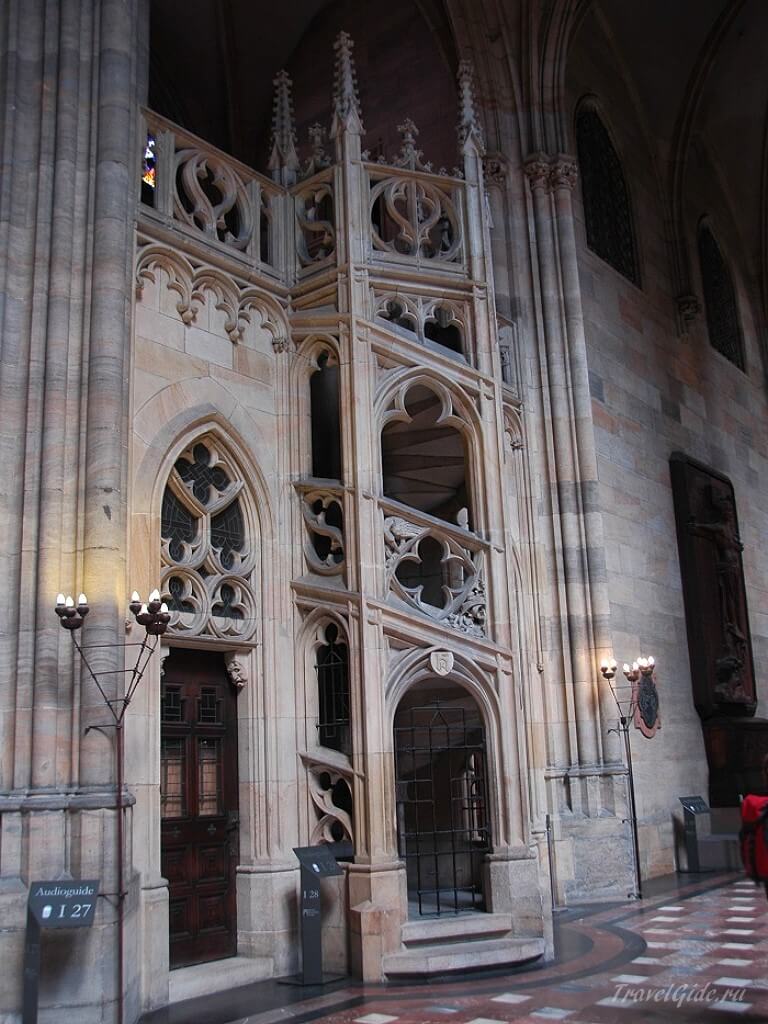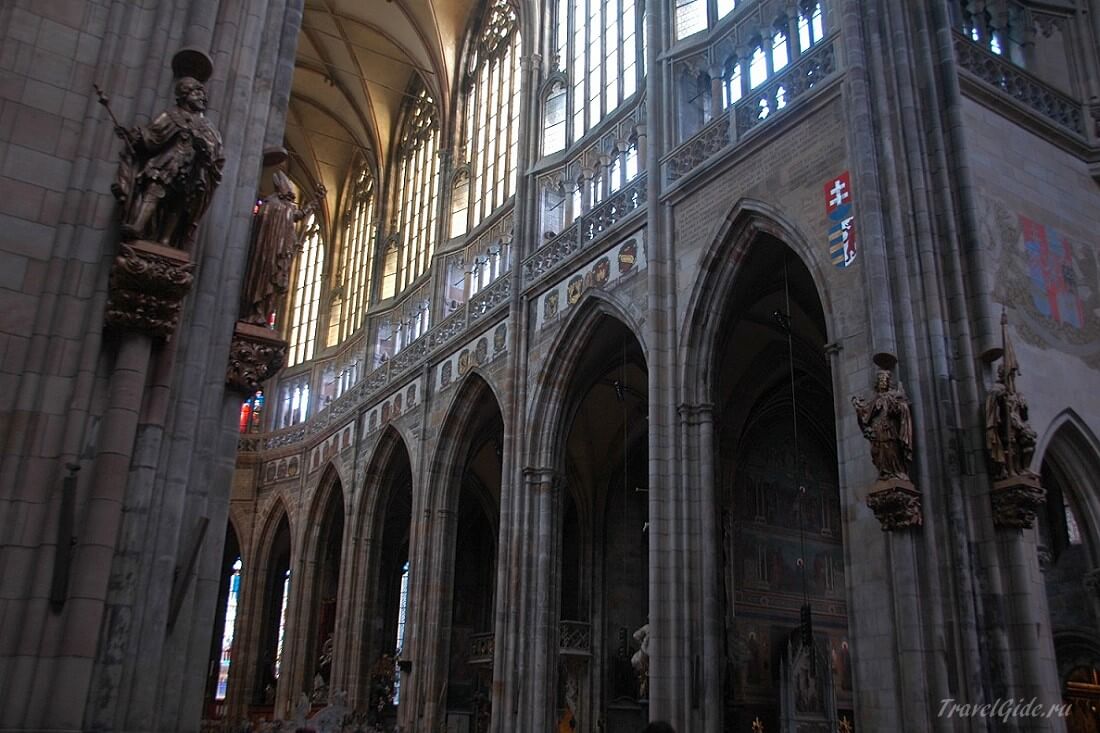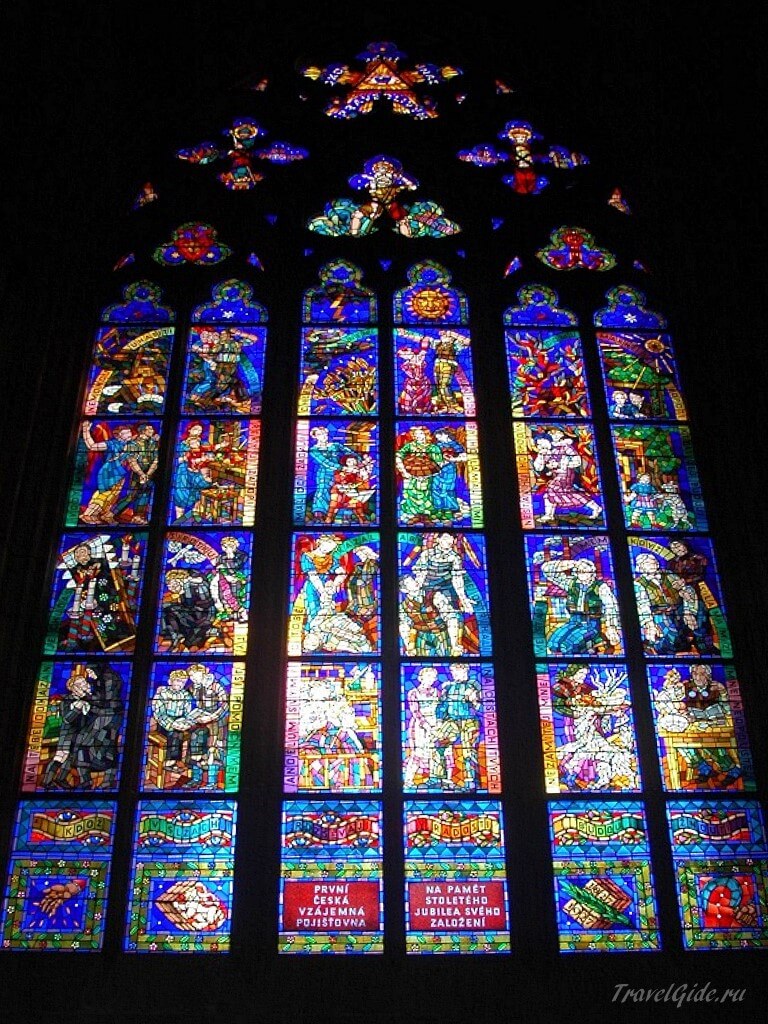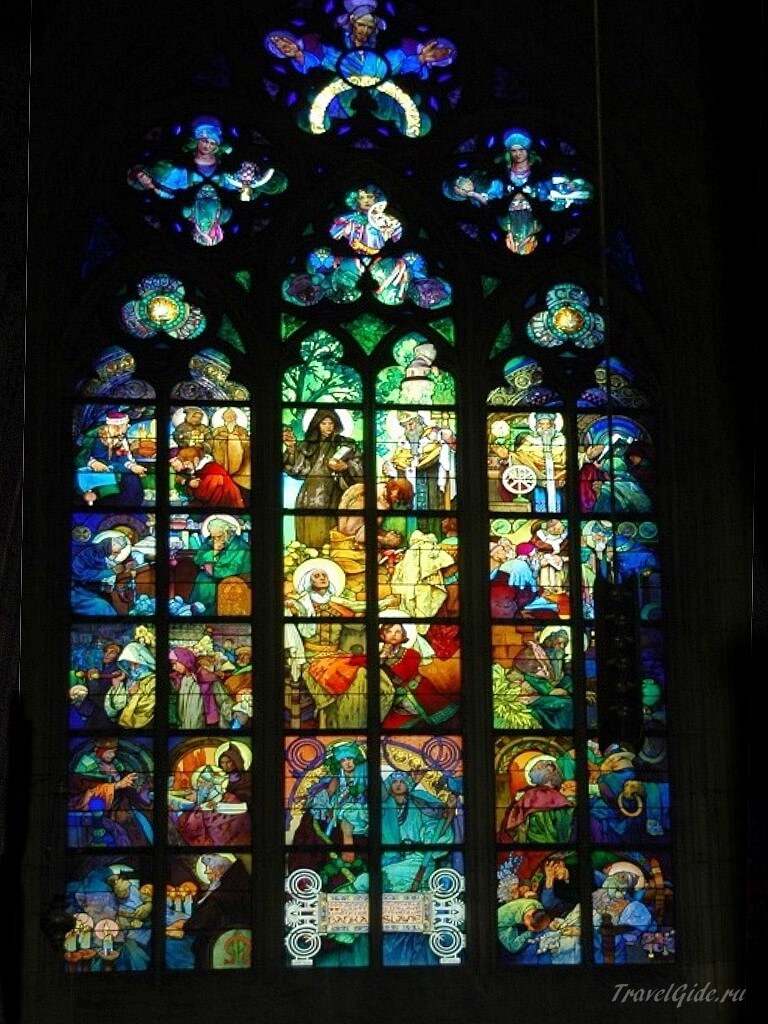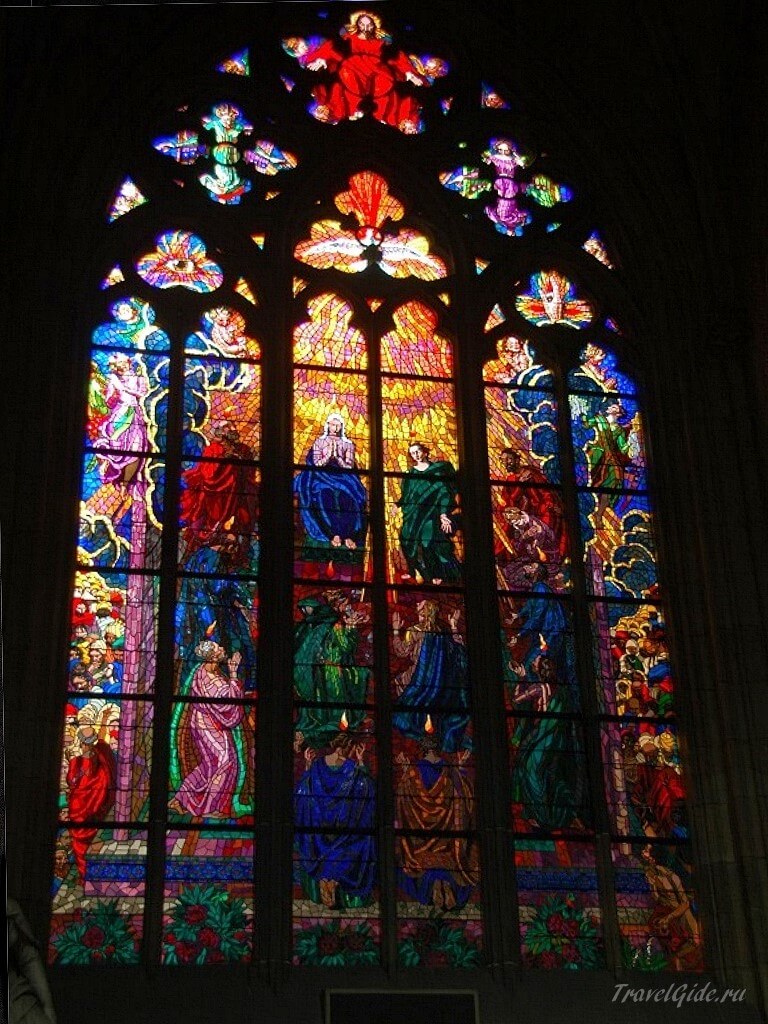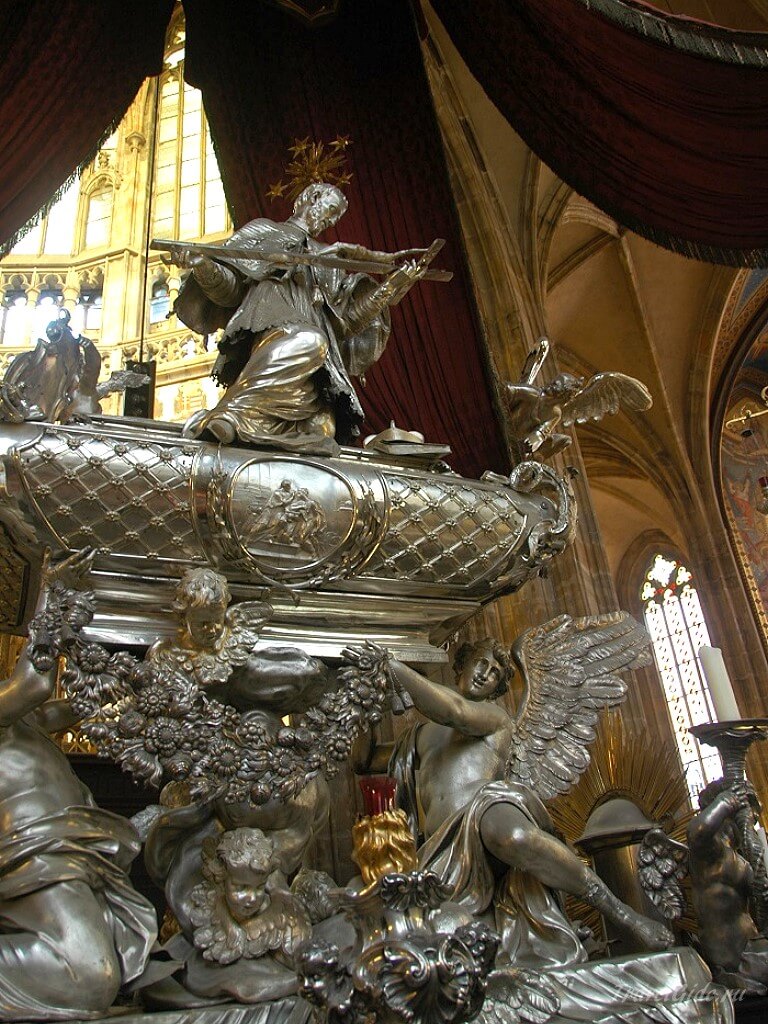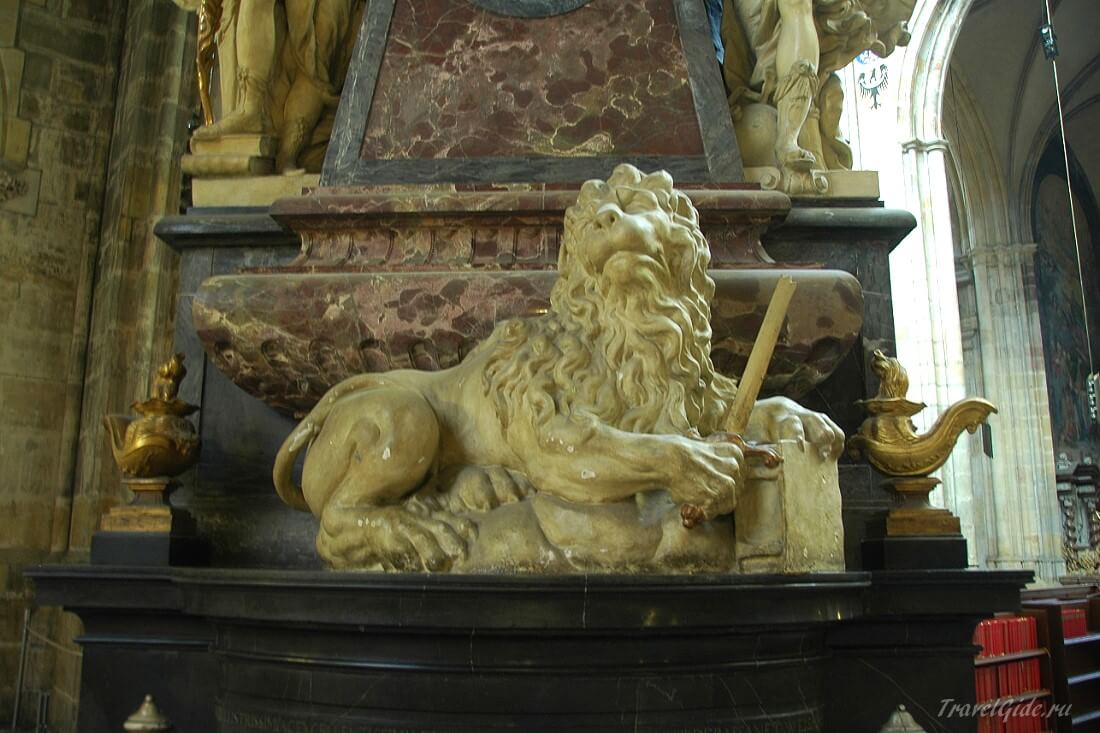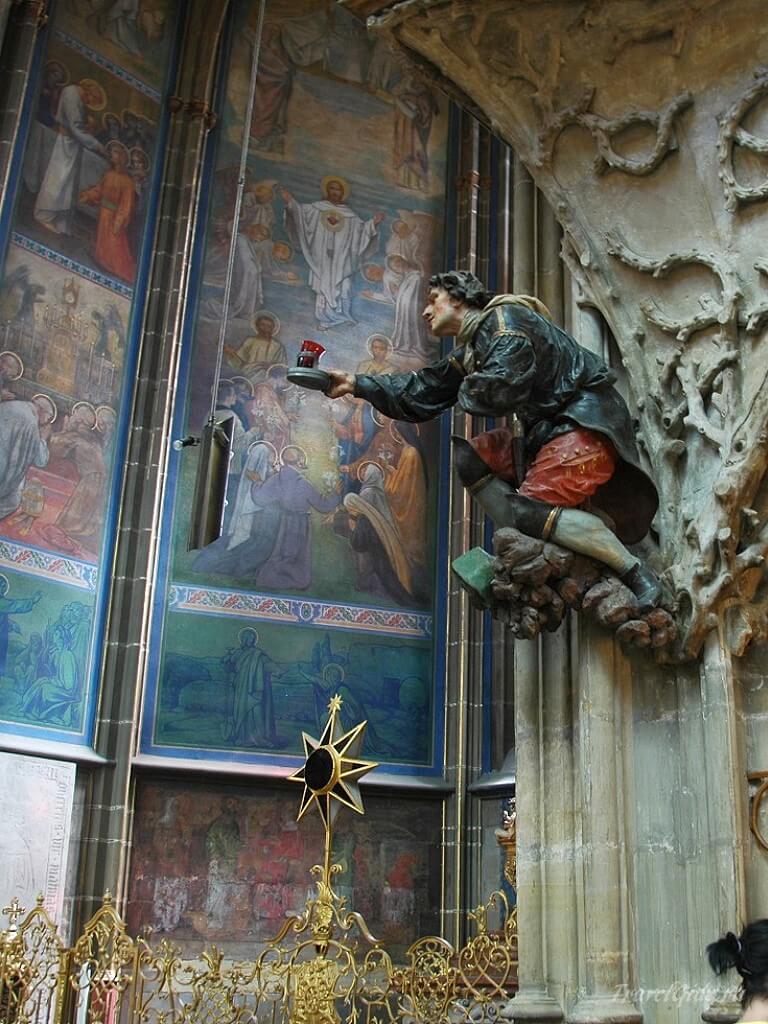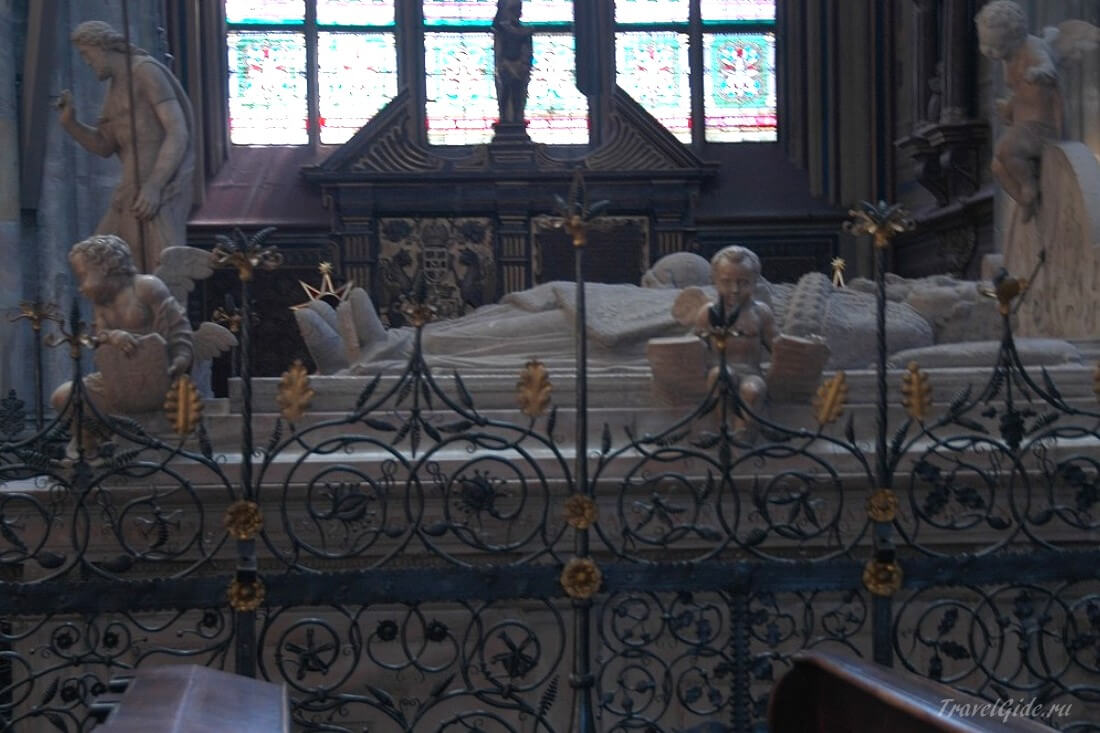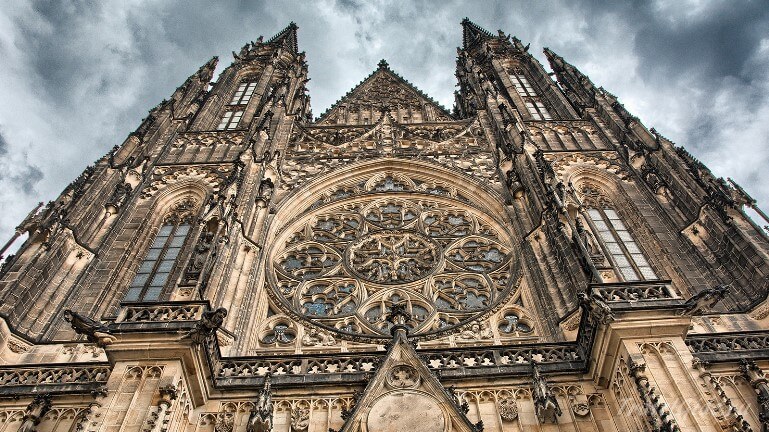
Heart of Prague - St. Vitus Cathedral
ToCathedral (diocesan) Cathedral of St. Vitus - the most grandiose and luxurious church in the Czech Republic. It is located in the old part of the capital, in the Prague Castle, on the left bank of the Vltava River. This part of the city was inhabited by Celts and Slavs from the 4th century BC, and in the 8th-9th centuries, modern development began. And as the center of this building, as the center of Prague, and as the center of the entire Czech Republic, it proudly rises above the whole city St. Vitus Cathedral - Cathedral of St. Vita. How and when did this greatest temple arise and what is it like today...
Origins: the wise and kind king of the Czech Republic Wenceslas
More than 1000 years ago, in 926, a wooden rotunda appeared, built by Prince Wenceslas (Vyacheslav) to store the relics of St. Vita.
Vaclav - the most respected ancient ruler and patron of the Czech land, canonized. Comes from the Czech Přemyslid dynasty. In his youth, Vaclav was unusually spiritually gifted and intellectually educated. He dreamed of devoting himself to the service of God, wanted to renounce the right of succession to the throne, as the eldest son of the king, and wanted to go to the monastery.
But he was called by Princess Lyudmila (later killed for this) to serve the Czech land and people. Wenceslas became the most merciful, just ruler in the history of the Czech Republic, ruling according to Christian laws.
Once, according to Czech legends, Wenceslas was invited to the Sejm to the Emperor of the Holy Roman Empire Henry I. Due to the lateness of Wenceslas, Henry I was angry with him, but when Wenceslas entered the reception hall, where all those invited to the Sejm had already gathered, the emperor saw Wenceslas is surrounded by angels leading him by the arms, and in the forehead of Wenceslas is a golden star.
This so stunned Henry I that he promised Wenceslas any gift he wanted. Wenceslas asked for part of the relics of the saint, Vitus, who was deeply revered in those days, who was painfully put to death in 303, stored in Rome.
So, Wenceslas was given the right hand (right hand) of St. Vita. It was for these relics that the original rotunda was built. In it, in 932, Wenceslas was buried, killed by his own younger brother Boleslav.
Wenceslas possessed amazing wisdom. He wanted a peaceful, smooth transition of the population from paganism to Christianity. Therefore, he used a sacred place for the construction of the temple, where there was an idol of the Slavic god of the Sun - Sventovit, revered by the population. In order not to injure people, the new temple was named consonantly - the name of St. Vitus. After 100 years, the Wenceslas rotunda was enlarged and turned into a Romanesque basilica.
Construction of the Cathedral of St. Vitus Cathedral
On November 21, 1344, Charles IV, from the Přemyslid dynasty by his mother, the son of the then king John of Luxembourg, laid the foundation stone for the construction of a new temple in the foundation of the basilica.
The fact is that the Czech diocese finally received independence from the Roman Catholic Church and accepted from the hands of the pope permission for the coronation ritual.
For such a significant event, a grandiose structure of extraordinary size was required.
The best architect was invited to Prague - Frenchman Mathieu. It is to him that the cathedral owes its magnificent Gothic style.
After the death of Mathieu, a young (23 years old), talented Swabian architect was chosen Peter Parler, who is also a sculptor and wood carver. He presented a bold project, to which he dedicated the rest of his life and which was continued after his death by his sons.
The construction of the temple lasted for 600 years and spanned several historical and cultural eras. After the two main architects described above, others came: B. Wohlmuth, Pacassi, Kranner, Mokker and Gilbert, who brought the luxury of baroque and renaissance to the strict Gothic architecture of the temple.
These 600 years turned out to be the most difficult in the history of the Czech Republic: endless devastating wars, popular unrest, famine, plague.
The duration of human life at that time was a record short. It is impossible even to imagine at the cost of what efforts and at the cost of how many lives this epoch-making construction was accomplished.
There was never enough money for construction. Charles IV introduced taxes from churches and the sale of indulgences, took tithes from silver miners.
Here is a list of additional afflictions of the temple:
- 1541 - strong fire
- 1619 - the temple was sacked by the Calvinists
- 1757 - the temple was badly damaged during the Prussian shelling
- 1760 - the helmet-shaped dome of the tower was shattered by a lightning strike
In addition, there is a legend about Wenceslas IV (1378-1419), the son of Charles IV, who had a prophecy "to die in front of the tower of St. To prevent the prophecy from coming true, Wenceslas IV ordered the demolition of the still unfinished tower of the temple.
However, the order was not carried out. Hussite unrest suddenly began, and Wenceslas IV died of a heart attack. So the cunning prophecy came true: he died literally before the completion of the tower.
Despite the endless hardships of construction, St. Vitus Cathedral in Prague has been active since the 15th century. Divine services and solemn ceremonies were held there. Until 1844, the temple had a temporary wooden roof. Construction was completed only in 1929, but the finishing work was still going on.
St. Vitus Cathedral today
In its present, present form, the temple exists only 80 years. Since the State and the Church refused to continue legal proceedings over the ownership of the Cathedral of St. Vita, the entrance to the temple became paid (the ticket entitles you to a two-day comprehensive inspection of the entire Prague Castle).
So, let's start our tour of the Prague Castle. We enter through the central gate, past the guard of honor, and find ourselves in the first courtyard with the residence of the President of the Chechen Republic and the government. Then we pass into the second courtyard past the buildings with a well and approach a small arch.
We enter and freeze from a temple so gigantic that suddenly appeared before our eyes that it is impossible to cover it with a glance. It is simply a miracle that a luxurious architectural ensemble is so carefully hidden in a small courtyard. It does not seem bulky at all, but unusually majestic.
Judge for yourself: its length is 124 meters, and the height of the tower is 100 meters. The facade is made of sandstone, which, having darkened with time, favorably sets off the extraordinary beauty of stone carvings and golden paintings that adorn the walls.
Many gigantic windows are decorated with stained-glass windows. For example, the Rose Stained Glass, made by master Kisella in 1921, has a diameter of 10.4 meters and tells about the Creation of the World.
Sharp spiers of carved towers adorn the roof. The clock on the main tower is the pride of King Rudolf II. At that time they were a mechanical novelty (they have two dials, they show the whole hour and every quarter hour).
On the tower of the southern facade there is a bell tower. It has 4 bells. The largest bears the name Zikmund (they were cast in bronze in 1549) and weighs 18 tons.
Freaks hang from the walls of the facade: chimeras - gargoyles that also serve as drains. It is believed that they keep evil spirits under control and scare them away from the temple and from a person who has stood under them for some time.
This is most likely just a joke, but according to legend, the builders endowed each gargoyle with the face of their mother-in-law and therefore they have different faces.
Inside the temple there is a three-nave basilica, 28 bearing columns and the best organ (1759) in Europe. The first tier is a through gallery.
Many windows create an unusual sparkling light thanks to multi-colored stained-glass windows.
The magnificent Golden Gate (the entrance to the hall) is closed with a bronze lattice with compositions on the zodiac themes and decorated with gold and colored stones carved in Venice. The mosaic of colored stones has an area of 82 square meters. m and shows the scene of the Last Judgment, and also depicts Jesus Christ with angels and Czech saints.
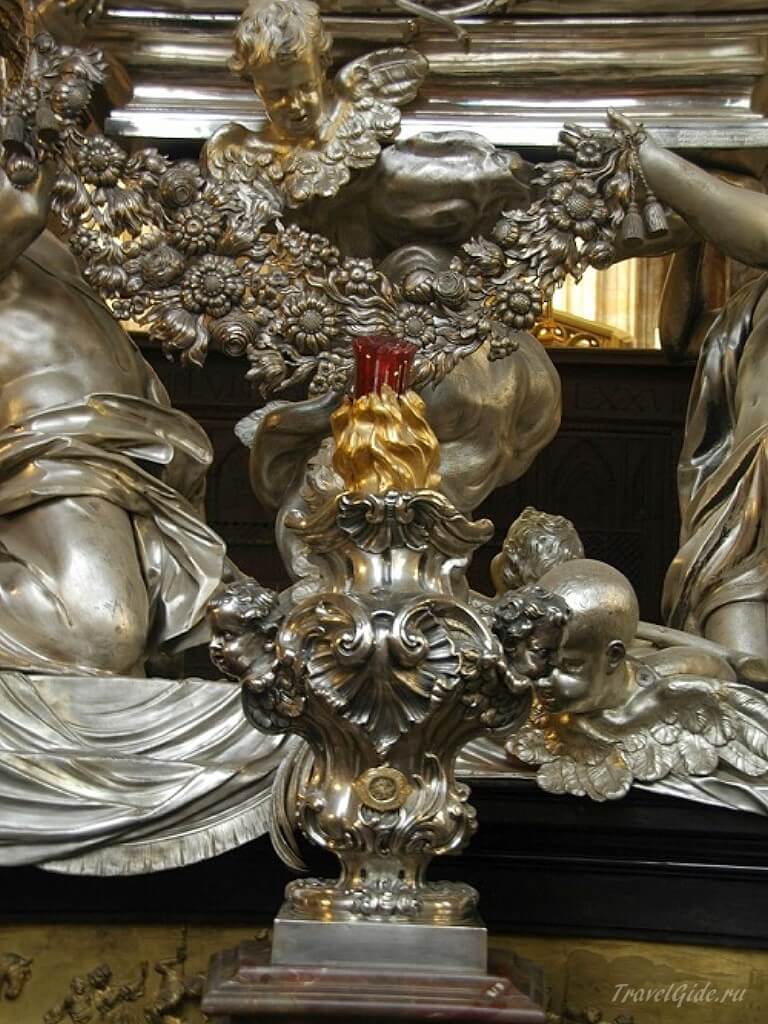
The most famous is the chapel of St. Wenceslas, is decorated with extraordinary paintings of the 14th century, and the tombstone is a mosaic of 1300 semi-precious stones (jasper, carnelian, amethyst, agate).
Under the window of the chapel is the entrance to the treasury. Unique exhibits are stored here: attributes of the coronation, a scepter and orb, the golden crown of St. Wenceslas (decorated with emeralds, pearls, sapphires), as well as rare ancient manuscripts and other historical relics. The treasury is locked with 7 locks. The keys are held by 7 main persons of the state: the president, the mayor, the archbishop, etc.
In the inner gallery above the main altar, there are 21 sandstone sculptures (members of the royal families and the architects of the temple).
In front of the main altar (14th century) there is a royal sarcophagus (16th century) made of white marble, of the Habsburg dynasty (author A. Kolin). Here rests King Ferdinand I with his wife Anna, their son Emperor Maximilian II.
Next to the 7th chapel (of the Holy Cross), a staircase leads to the dungeon, to the royal tomb - the crypt. This labyrinth is partially fenced off with bars. Under low ceilings, in simple wooden coffins, sleep Charles IV, his four wives, Wenceslas IV, Rudolf II, Jiri from Poděbrady. No decorations, everything is modest.
In the 8th chapel (Mary Magdalena) two main builders are buried: Mathieu and P. Parlerge. In the 10th chapel there are relics from the collection of Charles IV, brought by him from his travels. In front of the entrance there is a chapel where bishops were buried after 1909 under a stained-glass window with Cyril and Methodius (works by A. Mucha, 1931).
To the right of the new facade is an obelisk to the victims of the First World War. It was originally made from a single piece of marble by the craftsman Plečnik and was three times larger, but it split on the way to Prague. Therefore, only part of the monolith was installed, covering it from above with a golden pyramid.
So, together we made an excursion into the centuries-old history of the Czech Republic and at the same time visited the legendary church of St. Vita - The heart of old and modern Prague, pulsing with the powerful energy of time.
